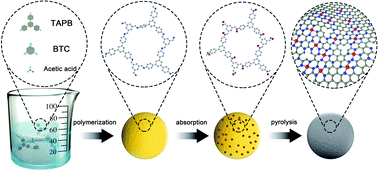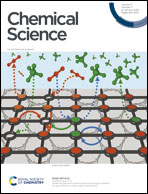Atomically dispersed Fe atoms anchored on COF-derived N-doped carbon nanospheres as efficient multi-functional catalysts†
Abstract
Non-noble metal isolated single atom site (ISAS) catalysts have attracted much attention due to their low cost, ultimate atom efficiency and outstanding catalytic performance. Herein, atomically dispersed Fe atoms are prepared by a covalent organic framework (COF)-absorption–pyrolysis strategy. The obtained Fe ISASs anchored on COF-derived N-doped carbon nanospheres (Fe-ISAS/CN) served as a multi-functional catalyst in electro-catalysis and organic catalysis, exhibiting better catalytic performance than commercial Pt/C for the ORR with good stability and methanol tolerance. Besides electro-catalysis, the Fe-ISAS/CN also showed outstanding catalytic performance in organic reactions, such as the selective oxidation of ethylbenzene to acetophenone and dehydrogenation of 1,2,3,4-tetrahydroquinoline with excellent reactivity, selectivity, stability and recyclability. Co and Ni ISAS materials can also be prepared by this method, suggesting that it is a general strategy to obtain metal ISAS catalysts. This work will provide new insight into the design of COF-derived metal ISAS multi-functional catalysts for electro-catalysis and organic reactions using rationally designed synthetic routes and the optimized structure of substrates.

- This article is part of the themed collection: Most popular 2019-2020 materials and energy chemistry articles


 Please wait while we load your content...
Please wait while we load your content...